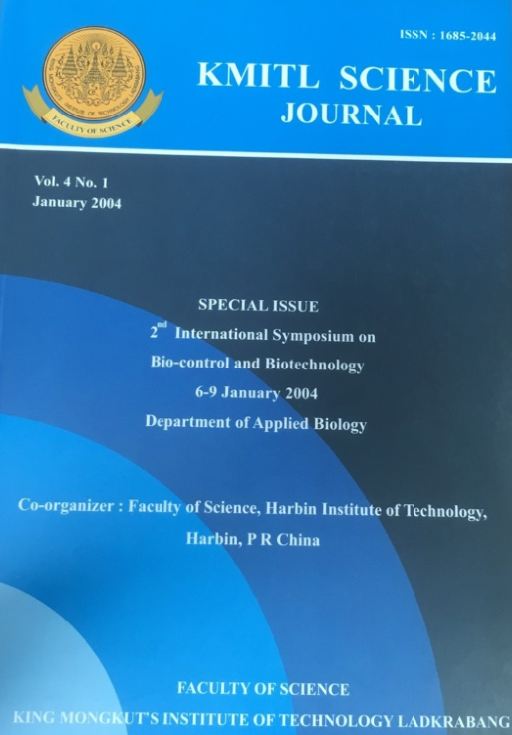The Effect of Chilling on Regenera of Microspore Derived Embryos of Brassica napus L.
Main Article Content
Abstract
The effect of chilling on microspore-derived embryos regeneration was studied in Brassica napus L. For this aim, F1 seeds of PF7045/91×Quantum cross was planted in growth chamber under conditions of 19°C and 16/8-h photoperiod (200 µmol m-2 s-1). Small buds with 3-3.5 mm length, containing microspores at very late uninucleate stage were collected from racemes and cultured in modified NLN-13 medium in the dark at 32.5°C for 3 days. Cultures were then transferred to dark condition at 25°C and shaken at 70 rpm. Cell divisions were observed using an invert microscope 3 days after culture. After 14 and 20 days, tiny globular and heart-shaped embryos were visible with naked eyes, respectively. Finally after 28 days, cotyledonary embryos with big cotyledons were produced. Mature embryos were cultured on B5 medium supplemented with 0.1 g/lit GA3 and pretreated at 4°C for 3, 6, 9 and 12 days in the dark. The embryos regenerated at 25°C were as control. Then, pretreated cultures were transferred to the light (16-h light/ 8-h dark) at 25°C conditions. The experiment was carried out in a complete random design with 4 replication. There was no significant difference between the means of regeneration frequencies at 4°C for 3, 6, 9 days and the control. Chilling for 12 days showed significant difference at 1% probability level compared to the control as the frequency of regeneration decreased.
Keywords: microspore, embryogenesis, chilling, regeneration, Brassica napus
Corresponding author: E-mail:bs_hosseinpour@yahoo.com
Article Details
Copyright Transfer Statement
The copyright of this article is transferred to Current Applied Science and Technology journal with effect if and when the article is accepted for publication. The copyright transfer covers the exclusive right to reproduce and distribute the article, including reprints, translations, photographic reproductions, electronic form (offline, online) or any other reproductions of similar nature.
The author warrants that this contribution is original and that he/she has full power to make this grant. The author signs for and accepts responsibility for releasing this material on behalf of any and all co-authors.
Here is the link for download: Copyright transfer form.pdf
References
[2] Chuong P.V. and W.D. Beversdorf. High frequency embrogenesis through isolated microspore culture in Brassica napus L. and B. Carinata Brawn. Plant Science. 39, 1985, 219-226.
[3] Keller, W.A., Arnison, P.G. and B.J. Cordy. Haploids from gametophytic cells-recent developments and future prospects. In: Plant Tissue and Cell Culture Alan R. Liss. New York 1987, 233-241.
[4] Pechan, P. M. and W. A. Keller. Induction of microspore embryogenesis in Brassica napus L. by gamma irradiation and athanol strees. In vitro Cell Development Biology. 25, 1989, 1073-1074.
[5] Kott, L.S., and W.D. Beversdorf. Enhanced plant regeneration from microspore-derived embryos of Brassica napus by chilling, partial desiccation and age selection. Pl. Cell Tissue Organ Cult. 23, 1990, 187-192.
[6] Chuong, P. V., Deslauriers, C., Kott, L. S. and W. D. Beversdorf. Effects of donor plant genotype and bud sampling on microspore culture of Brassica napus. Canadian Journal of Botany, 66, 1988, 1653-1657.
[7] Zhang, F. L. and Y. Takahata. Inheritance of microspore embryogenic ability in Brassica napus. Theor Appl Genet. 103, 2001, 254-258.


